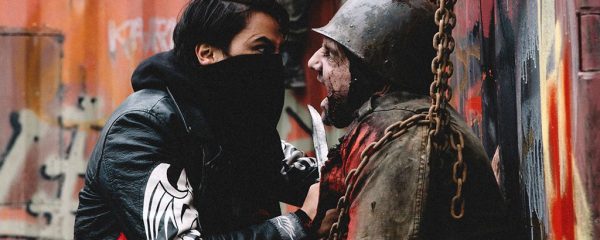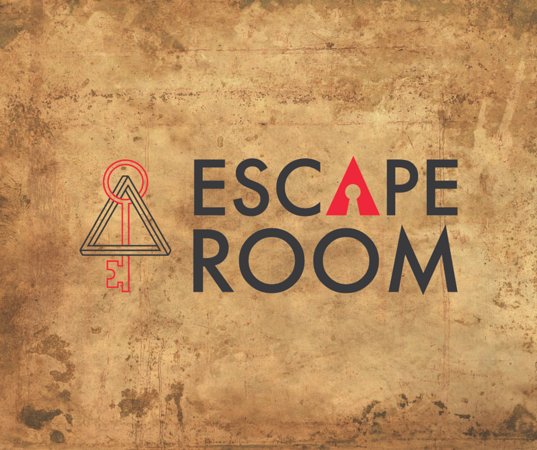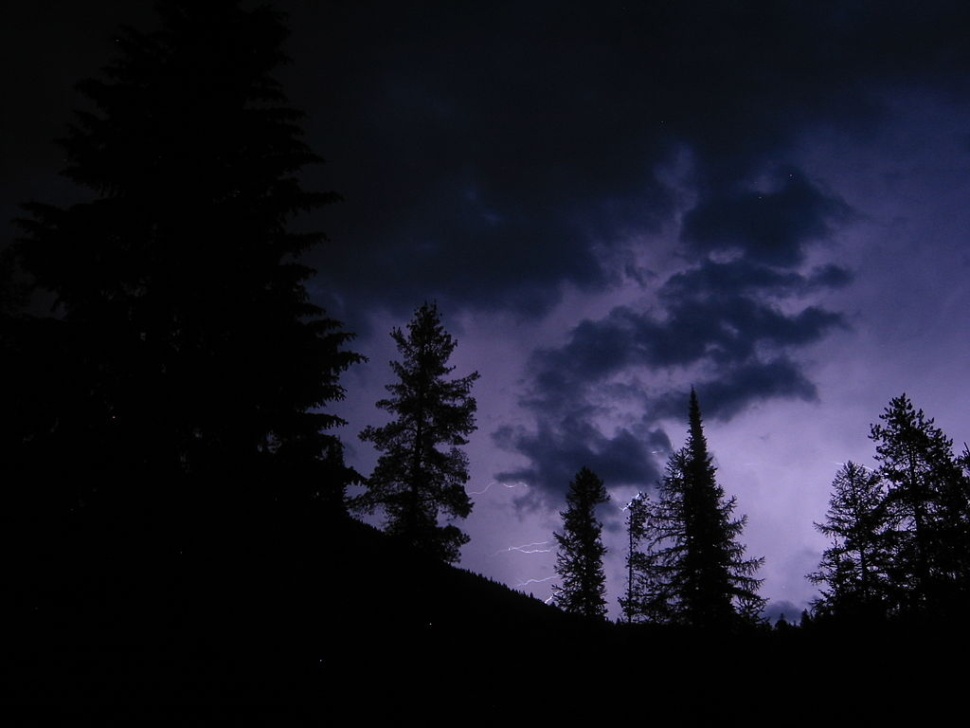
Few films carry as much weight on their shoulders as Blood Quantum (read our review here), the sophomore feature of writer-director Jeff Barnaby. The tale of a zombie plague that affects everyone except the Indigenous inhabitants of the Mi’gmaq reserve of Red Crow, who happen to be immune, the film not only had to live up to the high standard Barnaby set himself with his startling first feature, Rhymes for Young Ghouls, but had to wrestle with the undead spectre of colonialism that many audiences would prefer to forget.
Barnaby wasn’t about to let that weight hold him down, however. The Indigenous filmmaker set out first and foremost to make a movie that would be fun for zombie fans. Everything else just followed.
I recently caught up with Barnaby to discuss the damage inflicted by colonialism, capitalism, and blood-thirsty zombies. Here’s what he had to say.
SCREAM: Zombie films have been used as a metaphor for one thing or another for decades now, but I think Blood Quantum is the first movie I’ve seen to really use the genre to examine the legacy of colonialism. Were you surprised at all when you started developing the idea that this is somewhat untapped territory?
JEFF BARNABY: Not really, because that’s really what got me into making films in the first place—the idea that nobody was really representing Native people the way I experienced them. There weren’t any Native horror films out there, which is ironic, because the Native American trope is quite widely recognised in horror cinema, but there are no real Native Americans, unlike you see in Westerns. Native America doesn’t really exist outside of that somewhat ridiculous representation. So it didn’t surprise me at all that this was really untapped territory, because typically, the exploration in non-Native cinema of Native culture exists back when they were still walking around in buckskins.
For Native filmmakers, the sky’s the limit. I mean, the exploration is going to be endless. It’s an untapped resource because not only is there no real representation, but you’ve had misrepresentation going on for at least a century, so you have all that background to riff off too. I think the real problem being a Native filmmaker is kind of getting past all that—to move past all the bullshit representation and to get the audience to see these people just as human beings who have had the entire situation thrust upon them and are just trying to do what’s right. What’s right is not going to be black, white, and binary. It’s going to be messy, and it’s going to lead to a lot of bad decisions and consequences.
For me, one of the most fascinating elements of the film is the titular concept of the blood quantum measurement and the way it plays out in the form of Charlie’s baby and the uncertainty of whether or not it’s immune. I love that you take a concept that’s historically been used to oppress Native people and you reframe it in terms of a strength. Was that something that was very important for you to do from the outset, or did it happen organically during the writing process?
I would have to say organically, because the real catalyst was the idea of making the Native people immune to the plague, and everything sprung from that idea. I was halfway through writing it and I was like, “I think I’m writing a retelling-of-colonisation story.” And then it became trying to keep it in the realm of being not necessarily a fun zombie film, but fun for zombie fans. That’s the tightrope I was trying to walk.
I actually try to avoid inserting politics into my films, as crazy as that may sound. I try to bake ideas organically within the mechanics of the universe so the characters can’t help but deal with the ideas. So it’s not a superficially created construct to make it seem like, oh, racism is bad, because I don’t think it’s that easy to unpack, and I didn’t really go into this film to even begin to approach to solve those problems. I didn’t want to give the audience the idea that they were going to see anything other than a crazy zombie film. A lot of those politics are directed at a Native audience, because I know for a fact that non-Native people won’t get some of the stuff that’s in there, and even some of the Native people outside of my community won’t get what’s in there. So I think those Easter eggs are in there, but at the same time, I didn’t lose track of trying to make a zombie movie with mass appeal.
When you talk about Native people being represented in cinema, you talk about having white saviour films, and that’s something that we had to address. Because typically, the most popular films with Native representation always have that white guy—the Kevin Costner character, or the Hawkeye. I felt that vehicle needed to be there too so as not to alienate that part of the audience, because I wanted it to be a shared experience. That’s really the whole point of the film—that we were going to share the feature, even though one of us tried to dominate.
And I wanted to give the classic beats of a zombie film, almost. The sheriff character, you’ve seen him before. You’ve seen the nurse, the pregnant woman. Even the structure of the initial outbreak and then cutting to months later—I mean, you see that in Dawn of the Dead. I was using that to keep the audience around and introduce them to the politics of what it’s like being Native in the 21st century. And fuck man, it’s a lot to ask of a zombie film. As I sit here and talk about it, I realise how ambitious it was. And I also realise that if a viral outbreak didn’t happen, a lot of those politics would have got lost on the majority of the audience.
I think you’re right. You know, I went into the film knowing it was going to have some of these undertones, but the more I watched, the more I began trying to unpack the different layers. And some of the references, like the infected blankets, are going to be a little more universally understood, but then you’ve got things like the nod to [Alanis Obomsawin’s documentary] Incident at Restigouche that maybe aren’t as well known to people. And I found myself going away after the film and looking into these references a little bit deeper. Is that something that you’re hoping others will do?
I think so. I think that is something that fans of films do—they unpack them. I knew that and I was kind of banking on the idea that people would try to dig a little deeper. So I put these things in there not only to pay homage to my mentor Alanis Obomsawin, but to use them as illusions to call into that history. Because that’s another thing that I think is really lost in these colonisation films—when they’re set in the 1700s or the time of colonisation, it gives the audience the impression that it’s over. And really, it isn’t over. It just changed names. It went from colonisation to capitalism to the hypercapitalism we see now—late-stage capitalism, whatever the fuck you want to call it.
This is what the film is about. It’s about those origins and it’s about the power structure and, really, it’s about the disease of the system, as much as it is the disease of the body or the soul or the individual. Whereas I think zombies in Dawn of the Dead represented the consumer, zombies in Blood Quantum represent the manufacturers. [Laughs]
That’s a great way of looking at it. And obviously it’s become even more poignant recently with everything that’s going on in the world.
Well that’s it. Capitalists are asking people to die for the dollar the same way the colonists expected Natives to do the same thing. Hey, welcome to the club everybody.
Yeah. And while it’s a shame the film didn’t get the theatrical release that was planned, I think it almost has a more universal quality to it now we’re all watching it at home while this is going on outside our windows. In a way, it makes the film hit home harder.
Look at the initial outbreak in the film: being trapped inside of a prison with someone who has an infectious disease. Of course, this is one of the things that was exacerbated for politicians—the idea that you have millions of people wrongly incarcerated for bullshit, and right now their lives are in danger because of this system. You wouldn’t have recognised something like that—minorities being locked up in a cage with an infectious person—if this virus didn’t happen. All of a sudden, that stuff becomes bigger than the narrative on screen.
Absolutely. And speaking of things we’re all watching right now, what were some of your major reference points when you were making Blood Quantum?
A lot of the stuff came out of literature. Everybody talks about how it’s such an original idea that animals come back to life in a zombie film, it’s never really been done before besides Resident Evil, and I’m like well, if you look at books and literature, it’s been around for quite some time. One inspiration was Stephen King’s The Stand, speaking of infected animals. In The Stand, only the dogs get infected and the cats don’t for some reason. So I was drawing on those ideas.
When we were looking at visual inspiration, we were looking at French horror stuff from like a decade ago, like High Tension. À l’intérieur [Inside] was another one—specifically because, back in early drafts of the film, I wanted to go even harder than we ended up going. I don’t know if you remember the last scene of À l’intérieur with the pregnant lady, but we were going to go down that road. So we were looking at a lot of French Extreme horror, and we were looking at making a really, not so much gory, but disturbing film. I think that’s really what we were going for.
Another reviewer contextualised it as being a mean-spirited film. [Laughs] And it is. It really is. It’s not meant to be delicate, and I think the reason for that is this idea that Native people during this time, when you talk about colonialism, were not subject to any mercy whatsoever. These characters, not necessarily through their own design but through my design as a filmmaker, were looking at this infection as being something that you needed to stop at all costs. When you get introduced to the second act and you see that power shift—where you start with the punk Native kid staring down a zombie authority figure, and you move from that to killing a young non-Native girl—I think you get an idea of the world you exist in now.
It’s meant to be a zombie film, but at the same time, you’re making parallels between what Native people experience and what these non-Native people in the film are about to experience. And it really makes for muddy moral water, man, because when you talk about Lysol’s character, you say, oh he’s the bad guy—but is he though? Sure, he’s an asshole, and he’s tactless, and he has a warped sense of family. But is he wrong at the end of the day? And the real twisted, subversive question—the mirror that it holds up—is that the xenophobia projected by Lysol in the context of the film is right. It casts this weird light into the xenophobia we’re seeing from Trump supporters, for example, where it’s unjustified. So again, you’re creating this moral conundrum.
This was in the script when I initially wrote it, and then this virus came along and turned everything up to eleven. It aids in the allegory of the film because now everybody knows what it’s like to be trapped somewhere the way Native people were trapped on reserves. You know, Native people still needed permission up until the eighties to leave the reservations—written permission. We’re not talking about ancient history. And the reason we set Blood Quantum in the eighties was because we’re talking about politics that didn’t include a bow and arrow or wagons, but paper contracts and industry. Colonialism is not over. It’s put on a new skin.
You mentioned the reservations, and some fans may have spotted immediately that Blood Quantum is set in the same fictional reserve as your first feature, Rhymes for Young Ghouls. Do you consider these films to be actively in a dialogue with each other?
Oh, for sure. You could almost call it like a Reserve Trilogy. It’s not going to be the last film I do set on a reserve, but you’re not looking so much at a reserve acting socially within the confines of its border, but how it interacts with its white neighbours or white oppressors. In the case of Rhymes, it was the residential school; in Blood Quantum, it’s the adjacent town that’s filled with cannibal murderers. [Laughs]
How does Tarantino refer to it? He says there’s the cinematic world, and then there’s the make-believe that exists in the cinematic world. I think that’s kind of the way it is. I’ve been writing the same characters in the same world for about 20 years. It helps keep them all coherent for me. They’re all crossing over, existing in the same spacetime, the same fantastic reality. It’s not purely fantasy, but a kind of Game of Thrones fantasy that’s dictated by the brutal reality of the world they live in. Sure, dragons fly around, but you can still die from infectious wounds.
That’s kind of the world I’ve been trying to build for a while. It’s an amalgam of growing up in foster care on a reserve and losing myself in books to get through that. That just manifests itself on screen and in writing and in other things that I do, and that’s what basically saved my life over the course of my 40+ years on this planet. It’s true of cinema, and I think when you talk about cinema for a Native person and you talk about all that history doing all that damage—for a Native filmmaker, cinema is about undoing all that damage via the same medium.

That’s what we’re trying to do here. That’s what I’m trying to do, I think that’s what Taika [Waititi] is trying to do, Sterlin [Harjo], Danis Goulet. All these great filmmakers—and the majority of them are women, or gay, or representative of a community that typically don’t have a voice. So it’s an exciting time to be a filmmaker in this industry and be representative of an Indigenous population that seems to be just starting to find its voice.
I think that’s a great note to end on. Thanks so much for speaking with us!
Thank you!
Blood Quantum is available to watch now on Shudder in the US, UK, and Ireland. If you haven’t tried Shudder before, you can get a 30-day free trial when you use the code SHUTIN at Shudder.com.
Words: Samantha McLaren (@themeatispeople)







